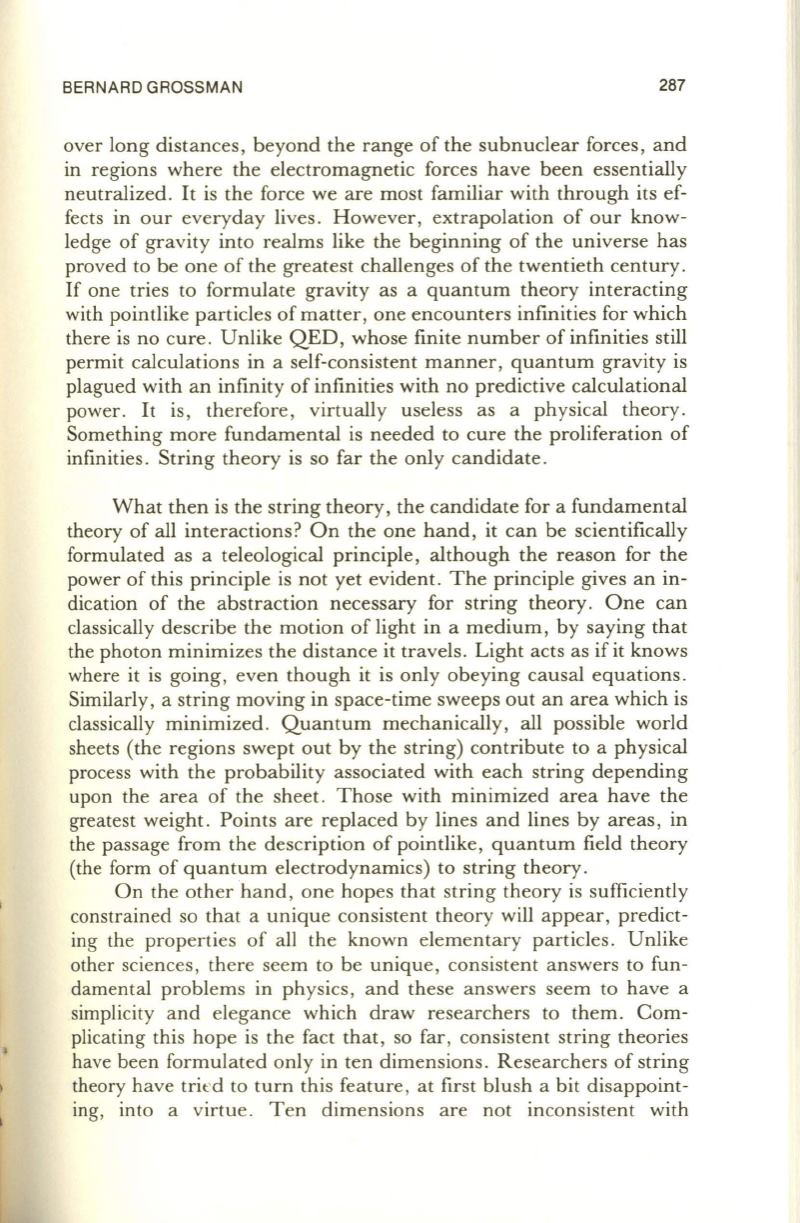
BERNARD GROSSMAN
287
over long distances, beyond the range of the subnuclear forces, and
in regions where the electromagnetic forces have been essentially
neutralized. It is the force we are most familiar with through its ef–
fects in our everyday lives . However, extrapolation of our know–
ledge of gravity into realms like the beginning of the universe has
proved to be one of the greatest challenges of the twentieth century.
If
one tries to formulate gravity as a quantum theory interacting
with pointlike particles of matter, one encounters infinities for which
there is no cure . Unlike QED, whose finite number of infinities still
permit calculations in a self-consistent manner, quantum gravity is
plagued with an infinity of infinities with no predictive calculational
power. It is, therefore, virtually useless as a physical theory.
Something more fundamental is needed to cure the proliferation of
infinities. String theory is so far the only candidate.
What then is the string theory, the candidate for a fundamental
theory of all interactions? On the one hand, it can be scientifically
formulated as a teleological principle, although the reason for the
power of this principle is not yet evident. The principle gives an in–
dication of the abstraction necessary for string theory. One can
classically describe the motion of light in a medium, by saying that
the photon minimizes the distance it travels. Light acts as if it knows
where it is going, even though it is only obeying causal equations.
Similarly, a string moving in space-time sweeps out an area which is
classically minimized. Quantum mechanically, all possible world
sheets (the regions swept out by the string) contribute to a physical
process with the probability associated with each string depending
upon the area of the sheet. Those with minimized area have the
greatest weight. Points are replaced by lines and lines by areas, in
the passage from the description of pointlike, quantum field theory
(the form of quantum electrodynamics) to string theory .
On the other hand, one hopes that string theory is sufficiently
constrained so that a unique consistent theory will appear, predict–
ing the properties of all the known elementary particles . Unlike
other sciences, there seem to be unique, consistent answers to fun–
damental problems in physics , and these answers seem to have a
simplicity and elegance which draw researchers to them. Com–
plicating this hope is the fact that, so far , consistent string theories
have been formulated only in ten dimensions. Researchers of string
theory have trit'd to turn this feature , at first blush a bit disappoint–
ing, into a virtue. T en dimensions are not inconsistent with


